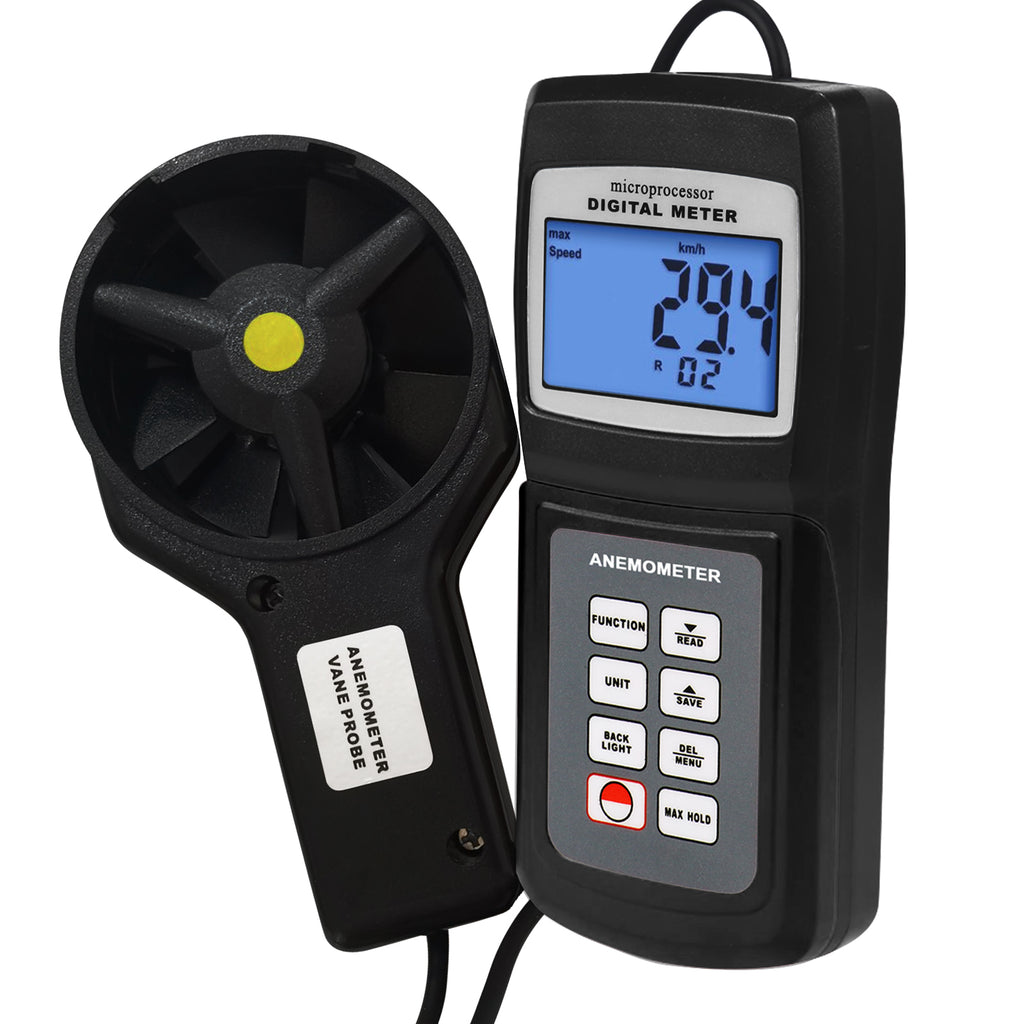Anemometers Revealed: Understanding Their Importance in Ecological Surveillance and Security Measures
The duty of anemometers in ecological monitoring and safety and security procedures is typically underestimated, yet their importance is undeniable. From meteorology to air travel safety, anemometers play an essential function in providing accurate information that informs decision-making procedures and boosts overall security.
Background of Anemometers
The evolution of anemometers can be traced back to the ancient civilizations where simple wind measuring gadgets were first utilized. These early wind dimension tools laid the structure for the advancement of more advanced anemometers over time. Among the earliest known anemometers was the hemispherical cup anemometer created by Leon Battista Alberti in the 15th century. This layout consisted of 4 hemispherical mugs that gathered wind power, providing a dimension of its strength based upon the rate of rotation.
In the 18th century, the prominent scientist John Thomas Romney Robinson presented the Robinson anemometer, which featured 4 hemispherical cups installed on straight arms that expanded from a main axis. This style ended up being a standard in atmospheric dimensions due to its accuracy and integrity. Throughout the years, developments in innovation resulted in the development of even more modern anemometers, including ultrasonic anemometers and laser Doppler anemometers, using boosted accuracy and efficiency in measuring wind speed and direction. The history of anemometers showcases an impressive journey of development and progress in the field of meteorology.
Types of Anemometers
Throughout the field of weather forecasting, various sorts of anemometers have actually been established to accurately measure wind rate and direction. The most common kind is the cup anemometer, which contains 3 or 4 cups mounted on straight arms that turn with the wind. As the cups rotate, the rate at which they rotate is straight symmetrical to the wind speed. An additional extensively utilized type is the vane anemometer, which features a tail or fin that straightens itself with the wind instructions. This placement permits the gadget to establish the wind instructions. Sonic anemometers utilize ultrasonic signals to gauge wind speed and direction accurately. They are frequently made use of in research applications as a result of their high precision. Hot-wire anemometers run based upon the principle that the cooling effect of wind on a heated wire is symmetrical to the wind rate. These anemometers appropriate for measuring low wind speeds with high precision. Each sort of anemometer has its staminas and is chosen based on the specific demands of the surveillance task handy.
Applications in Weather Forecasting
Having gone over the numerous kinds of anemometers utilized in meteorology for determining wind rate and instructions, it is important to look here discover their practical applications in the field. Anemometers play a vital duty in meteorology by offering precise and real-time information on wind problems (anemometer). Meteorologists use anemometers to keep track of wind speed and instructions to forecast weather patterns, problem warnings for serious weather condition occasions like storms, tornadoes, and storms, and examine atmospheric conditions for air travel safety
In weather forecasting, anemometers help in comprehending local and local wind patterns, which are vital for anticipating weather modifications and determining climatic patterns. These gadgets are also used in study to research microclimates, metropolitan heat islands, and air pollution dispersion. Additionally, anemometers are employed in agriculture to maximize plant monitoring techniques, such as irrigation and pesticide application, based on wind problems.
Significance in Aviation Safety And Security
An indispensable element of guaranteeing air travel security depends on the meticulous tracking of wind conditions making use of anemometers. Anemometers play an important role in aeronautics by offering real-time information on wind speed and instructions, aiding pilots in making educated decisions throughout touchdown, flight, and liftoff. Solid and unforeseeable winds can considerably influence airplane procedures, making it necessary for aviation authorities to count on precise wind measurements to make sure the safety and security of travelers and staff.

In the vibrant setting of aeronautics, where also small adjustments in wind rate and direction can have profound impacts, anemometers stand as vital devices for advertising safe and protected flight.
Function in Environmental Research Study
Anemometers play a vital duty in ecological research by offering necessary information on wind speed and direction. By precisely determining wind features, anemometers aid researchers examine the activity of pollutants in the air, examine the impact of commercial exhausts, and forecast the spread of impurities original site in the setting.


Final Thought
In verdict, anemometers have actually played a crucial duty in ecological tracking and find out this here safety measures. Recognizing the relevance of anemometers is vital for accurately gauging wind speed and direction, which is crucial for predicting climate patterns, making sure safe aeronautics operations, and performing environmental research studies.
One of the earliest recognized anemometers was the hemispherical cup anemometer developed by Leon Battista Alberti in the 15th century. Over the years, developments in modern technology led to the advancement of even more modern anemometers, consisting of ultrasonic anemometers and laser Doppler anemometers, providing raised accuracy and efficiency in determining wind rate and direction. Hot-wire anemometers run based on the concept that the cooling impact of wind on a warmed wire is proportional to the wind rate. Meteorologists use anemometers to keep an eye on wind speed and direction to anticipate weather patterns, problem cautions for severe weather condition occasions like typhoons, storms, and hurricanes, and analyze atmospheric conditions for aeronautics safety.
Comprehending the relevance of anemometers is essential for precisely gauging wind rate and direction, which is essential for forecasting weather patterns, guaranteeing risk-free aeronautics procedures, and performing ecological studies. (anemometer)